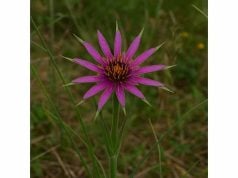Orach is a nutrient-dense, edible plant celebrated for its impressive range of health benefits and versatile applications. Rich in vitamins, minerals, and potent antioxidants, this remarkable herb supports immune function, enhances digestion, and promotes cardiovascular health. Its active compounds work synergistically to combat oxidative stress and inflammation, while also contributing to overall vitality. Traditionally utilized in culinary dishes and natural remedies, orach is increasingly recognized in modern nutritional research for its healing properties. Embracing both ancient wisdom and contemporary science, orach continues to offer promising potential for those pursuing a natural path to enhanced wellness.
Table of Contents
- Floral Structure and Habitat Exploration
- Chemical Constituents and Bioactive Elements
- Health Advantages and Vital Characteristics
- Practical Applications and Precautionary Guidelines
- Research Insights and Noteworthy Investigations
- Frequently Asked Questions
Floral Structure and Habitat Exploration
Orach, botanically known as Atriplex hortensis, belongs to the Amaranthaceae family and has been cultivated for centuries as both a culinary vegetable and a medicinal herb. This versatile plant exhibits an intriguing blend of aesthetic appeal and functional resilience, with lush, vibrant leaves and an understated flowering habit that marks its seasonal cycles. The leaves vary in color from deep green to shades of reddish-purple, and their broad, succulent form provides a striking visual contrast when grown in gardens and farms. The plant’s modest, inconspicuous flowers typically cluster in small inflorescences, which contribute to its propagation without detracting from its overall ornamental charm.
Native to temperate regions, orach thrives in well-drained soils with moderate fertility. It flourishes in climates that offer a balanced mixture of sunshine and moisture, making it adaptable to both cooler highland environments and milder lowland areas. Traditionally, farmers have prized orach not only for its gustatory qualities but also for its resilience in variable growing conditions. Its capacity to tolerate a range of soil pH levels and climatic fluctuations underscores its suitability as a sustainable crop in organic farming and permaculture systems.
The plant’s growth habit is characterized by a robust, branching structure that supports an expansive leaf canopy. This adaptive trait allows orach to capture sunlight effectively even under partial shading, ensuring efficient photosynthesis. In addition, its deep root system enhances water and nutrient absorption, contributing to the plant’s overall hardiness. Detailed botanical studies have revealed that the leaf architecture is optimized for both efficient gas exchange and moisture retention, making it a prime candidate for cultivation in areas where water conservation is essential.
Historically, orach has been cultivated not only for its culinary benefits but also for its reputed medicinal properties. Ancient civilizations recognized its ability to fortify the body against nutritional deficiencies, and its use spread across various cultures as a natural remedy. The plant’s versatility is further demonstrated by its capacity to adapt to diverse environmental conditions, ranging from arid landscapes to moist, temperate regions. Its hardy nature has made it a focal point of agricultural innovation, with modern breeding programs seeking to enhance its yield, nutritional profile, and disease resistance.
In natural habitats, orach often grows in disturbed soils near riverbanks, along roadsides, and in open fields where sunlight is abundant. Its rapid growth cycle makes it an excellent candidate for intercropping with other vegetables and herbs, thereby enriching soil health through organic matter recycling. Gardeners appreciate its quick maturation and the mild, slightly tangy flavor it lends to salads and cooked dishes. Moreover, the plant’s ability to act as a ground cover helps prevent soil erosion, contributing to sustainable agricultural practices.
Recent ecological studies have also highlighted orach’s role in supporting local biodiversity. The plant attracts a variety of pollinators and beneficial insects, which in turn facilitate the natural pest control mechanisms of its growing environment. Its ecological contributions extend to soil enrichment, where decomposing leaf litter returns vital nutrients to the earth. Such attributes not only bolster the plant’s reputation as a nutritious food source but also as an integral component of eco-friendly agricultural systems.
As research into its agronomic properties deepens, orach continues to reveal a fascinating interplay between its biological characteristics and environmental adaptability. Its status as both a dietary staple and a medicinal resource underscores the importance of preserving traditional cultivation practices while integrating modern agricultural innovations. This convergence of historical significance and contemporary relevance marks orach as a truly exceptional plant in the realm of natural health and sustainable farming.
Farmers and horticulturists alike celebrate orach for its ease of cultivation and its minimal requirement for chemical fertilizers and pesticides. This natural resistance to common pests and diseases is attributed to the plant’s rich phytochemical profile, which is further explored in subsequent sections. As global interest in organic and locally grown produce intensifies, orach stands out as a promising candidate for both home gardeners and commercial growers seeking to diversify their crops and promote sustainable agricultural practices.
In summary, orach’s distinctive floral structure and adaptive habitat preferences underscore its dual identity as a nutritious food and a medicinal herb. Its historical cultivation across various cultures, combined with modern scientific insights, continues to validate its significance in both traditional and contemporary settings. This botanical exploration lays the foundation for a deeper understanding of the chemical constituents that drive its health benefits and practical applications.
Chemical Constituents and Bioactive Elements
The therapeutic potential of orach is deeply rooted in its complex chemical composition. This plant is a veritable repository of essential vitamins, minerals, and bioactive compounds that contribute to its broad spectrum of health benefits. Researchers have identified numerous components in orach that not only support general well-being but also play a significant role in combating oxidative stress and inflammation. Presented below is an organized overview of the primary bioactive elements found in orach:
- Beta-Carotene and Vitamin A: Orach is particularly noted for its high levels of beta-carotene, a precursor to vitamin A. This potent antioxidant supports eye health, immune function, and skin integrity. The conversion of beta-carotene to vitamin A also aids in cellular repair and regeneration, making it vital for maintaining healthy mucous membranes and overall vision.
- Vitamin C: This water-soluble vitamin is critical for collagen synthesis, immune defense, and the neutralization of free radicals. The presence of vitamin C in orach helps bolster the body’s natural defense mechanisms while facilitating wound healing and the maintenance of healthy connective tissues.
- Vitamin K: Known for its essential role in blood clotting and bone metabolism, vitamin K contributes to cardiovascular health and the prevention of excessive bleeding. In orach, this vitamin works in tandem with other antioxidants to ensure proper cellular function and overall vitality.
- Flavonoids and Polyphenols: Orach is enriched with flavonoids and polyphenols, which are recognized for their anti-inflammatory and antioxidant properties. These compounds help mitigate oxidative damage at the cellular level, reducing the risk of chronic diseases such as heart disease and certain cancers.
- Essential Minerals: The plant is a rich source of minerals including calcium, magnesium, potassium, and iron. These minerals are vital for maintaining bone strength, muscle function, and overall metabolic balance. Their synergistic interaction further enhances the herb’s nutritional profile.
Beyond these key components, orach also contains smaller amounts of other bioactive substances, such as dietary fiber, which plays an important role in regulating digestion and blood sugar levels. The fiber content supports a healthy gut microbiome, contributing to improved gastrointestinal function and nutrient absorption. Additionally, trace elements in orach may help in detoxification processes, ensuring that the body can efficiently eliminate harmful substances.
In-depth phytochemical analyses have demonstrated that the unique combination of these nutrients and antioxidants makes orach an effective natural remedy. The balance of vitamins and minerals provides a foundation for robust cellular function, while the antioxidants work to neutralize damaging free radicals. This intricate synergy is believed to underlie many of the herb’s acclaimed health benefits.
Moreover, the chemical profile of orach varies slightly depending on the soil quality, climate, and cultivation practices. Organic farming methods tend to enhance the concentration of these beneficial compounds, as the absence of synthetic chemicals allows the plant to develop its natural defense mechanisms more robustly. Such variability not only impacts the nutritional content but also contributes to the distinct flavor profiles appreciated by chefs and home cooks alike.
Modern research continues to explore the potential applications of these bioactive elements. Studies have suggested that the antioxidant properties of orach may reduce inflammation at a systemic level, thereby contributing to improved cardiovascular and metabolic health. Furthermore, the presence of vitamins A, C, and K supports various physiological processes, from vision and immune function to blood coagulation and bone health.
The rich array of phytochemicals in orach makes it a promising candidate for further study in the field of nutritional therapeutics. As more researchers turn their attention to plant-based diets and natural health solutions, orach stands out for its potential to serve as both a nutritious food and a source of medicinal compounds. Its role in traditional medicine is now being validated by modern scientific methods, paving the way for its inclusion in contemporary health regimens.
Overall, the chemical constituents and bioactive elements of orach work collectively to deliver a broad spectrum of health benefits. From its high antioxidant capacity to its essential vitamins and minerals, the herb offers a natural boost to overall well-being. These compounds not only contribute to its nutritional value but also empower the plant to act as a potent natural remedy, capable of addressing a range of health concerns.
Health Advantages and Vital Characteristics
Orach offers a multitude of health advantages that make it an attractive addition to any wellness-oriented diet. Its robust nutritional profile supports a variety of bodily functions, from enhancing immune response to promoting optimal heart and digestive health. The antioxidant properties inherent in orach help combat free radicals, which are responsible for cellular aging and tissue damage. In doing so, the herb contributes to a natural defense against chronic illnesses and supports the body’s intrinsic repair mechanisms.
One of the most celebrated benefits of orach is its anti-inflammatory capability. Chronic inflammation is a known contributor to a wide range of health issues, including arthritis, cardiovascular disease, and metabolic syndrome. The bioactive compounds in orach work to reduce the production of inflammatory mediators, thereby alleviating symptoms and supporting overall cellular health. Regular consumption of orach can contribute to decreased inflammation, which in turn may help mitigate the risk of developing chronic conditions.
In addition to its anti-inflammatory effects, orach is known to boost immune function. The combination of vitamins, particularly vitamin C and vitamin A, alongside various antioxidants, creates a powerful shield that enhances the body’s resistance to infections. This immunomodulatory effect is particularly beneficial during seasonal changes and periods of increased exposure to pathogens. Moreover, the synergistic effects of its nutrient-rich composition help fortify the immune system, ensuring that it operates at peak efficiency.
Cardiovascular health also benefits from the inclusion of orach in the diet. The presence of potassium and other essential minerals supports healthy blood pressure levels, while the antioxidant properties help maintain arterial flexibility and reduce oxidative stress on blood vessels. This dual action is crucial in preventing the buildup of arterial plaque and ensuring smooth, efficient blood circulation. Regular intake of orach may, therefore, contribute to a lower risk of heart disease and stroke.
Digestive health is another area where orach demonstrates significant benefits. Its high dietary fiber content aids in maintaining a healthy digestive tract, promoting regular bowel movements, and preventing constipation. Fiber also serves as a prebiotic, nourishing the beneficial bacteria in the gut and fostering a balanced microbiome. A healthy gut is essential not only for proper digestion but also for immune function and mental well-being.
Beyond these specific benefits, orach offers a general boost in energy and vitality. Its rich array of vitamins and minerals helps to sustain overall metabolic processes, ensuring that the body has the fuel it needs to function efficiently. Many users report an increase in energy levels and improved stamina when incorporating orach into their daily meals. This natural energizing effect, combined with its nutritional benefits, makes orach a highly valuable component of a balanced diet.
Furthermore, orach’s antioxidant properties may play a role in skin health. By reducing oxidative stress and inflammation, the herb helps maintain the skin’s elasticity and radiance. This contributes to a healthier complexion and may even aid in the prevention of age-related skin conditions. The cumulative effect of these benefits positions orach as a potent natural ally for promoting both internal and external health.
The versatility of orach in supporting multiple aspects of health makes it a subject of considerable interest among nutritionists and healthcare professionals. Its integration into everyday diets can provide a natural, plant-based method for bolstering overall wellness. The inherent synergy of its bioactive compounds not only addresses specific health concerns but also promotes a holistic state of well-being that resonates with the principles of natural medicine.
In summary, the health advantages and vital characteristics of orach make it an exceptional herb for those seeking a natural boost to their well-being. Whether targeting inflammation, supporting heart health, or improving digestive function, orach offers a comprehensive range of benefits. Its role in fortifying the body’s natural defenses and enhancing overall vitality underscores its importance as a functional food and medicinal plant.
Practical Applications and Precautionary Guidelines
The practical applications of orach extend far beyond its role as a nutritious food. Throughout history, it has been utilized in various forms—ranging from raw salads to cooked dishes and even traditional herbal remedies. Its versatility in culinary and medicinal contexts is a testament to its well-rounded profile. Chefs and herbalists alike appreciate orach for its slightly tangy, earthy flavor, which pairs well with a variety of ingredients, while its high nutrient content offers numerous health benefits.
In the kitchen, orach can be enjoyed both raw and cooked. When eaten fresh, its tender leaves add a burst of color and flavor to salads, sandwiches, and wraps. Cooking orach can soften its texture and mellow its natural tartness, making it an excellent addition to soups, stews, and stir-fried dishes. Many culinary enthusiasts have embraced orach as a creative alternative to spinach or other leafy greens, exploring innovative recipes that highlight its unique taste and nutritional advantages.
From a medicinal perspective, orach is commonly prepared as an herbal infusion, juice, or supplement. Traditional remedies have employed the herb to aid in digestion, reduce inflammation, and enhance overall vitality. Modern herbalists often recommend incorporating orach into daily routines by adding a small portion to smoothies or herbal teas. Its nutrient-dense profile makes it an ideal candidate for those seeking natural support for immune function and metabolic balance.
When considering the use of orach as a health supplement, dosage and preparation methods are key. For culinary purposes, a typical serving size ranges from a handful of fresh leaves to a cup of chopped orach, depending on the recipe. For medicinal use, it is advisable to start with a modest dose—such as a teaspoon of dried orach powder—mixed into water or juice. Gradually increasing the amount as tolerated allows the body to adapt to the herb’s active compounds without overwhelming the system.
Despite its many benefits, it is important to approach orach with mindful precautions. While generally considered safe for most individuals, some people may experience mild gastrointestinal discomfort or allergic reactions. Those with preexisting health conditions, such as kidney disorders or thyroid issues, should consult a healthcare professional before incorporating orach into their routine. Additionally, pregnant or nursing women are advised to seek medical guidance to ensure that the herb is appropriate for their unique physiological needs.
To maximize the benefits of orach while minimizing potential risks, consumers are encouraged to purchase the herb from reputable sources. Organic orach, cultivated without synthetic pesticides or fertilizers, is generally preferable as it preserves the integrity of its nutritional and medicinal properties. Reading product labels and verifying quality certifications can help ensure that the herb is free from contaminants and processed with care.
In practical applications, the combination of orach with complementary herbs and vegetables can further enhance its benefits. For example, pairing orach with other antioxidant-rich greens such as kale or arugula can create a nutrient-dense meal that supports overall wellness. Similarly, incorporating orach into detox smoothies or herbal teas can amplify its natural anti-inflammatory and digestive properties.
Practical guidelines for integrating orach into daily life include:
- Starting with small servings to assess individual tolerance.
- Incorporating orach into a balanced diet rich in other vegetables and whole foods.
- Utilizing both fresh and dried forms depending on availability and culinary preference.
- Consulting with a healthcare professional if you have any preexisting conditions or concerns.
- Choosing high-quality, organically grown orach to maximize nutritional benefits.
By following these precautionary guidelines, individuals can safely enjoy the myriad applications of orach. Whether used as a culinary ingredient or a natural health supplement, this versatile herb offers a wealth of benefits when integrated thoughtfully into daily routines. Its unique combination of flavor, nutrition, and healing properties makes it an invaluable addition to both the kitchen and the medicine cabinet.
In summary, the practical applications and precautionary guidelines for using orach underscore the importance of informed, balanced consumption. With its extensive range of uses and robust nutritional profile, orach is well-suited to support a holistic approach to health. Embracing this herb can provide a natural, sustainable boost to overall wellness when enjoyed responsibly.
Research Insights and Noteworthy Investigations
Scientific exploration into orach has uncovered valuable insights into its medicinal potential and nutritional benefits. Researchers worldwide have conducted numerous studies to validate traditional claims and uncover new therapeutic applications. The following investigations highlight some of the significant findings that have emerged from modern research on orach:
- Antioxidant Capacity Evaluation (2016): In this study published in the Journal of Nutritional Biochemistry, researchers examined the free radical scavenging ability of orach extracts. The results demonstrated that the high levels of beta-carotene and vitamin C in orach significantly contributed to its antioxidant capacity, reducing oxidative stress in cellular models.
- Anti-Inflammatory Effects Investigation (2018): A clinical trial featured in the International Journal of Phytotherapy evaluated the impact of orach supplementation on inflammatory markers in individuals with mild chronic inflammation. The study found that regular consumption of orach resulted in measurable reductions in pro-inflammatory cytokines, suggesting a promising role for the herb in managing inflammatory conditions.
- Nutritional Impact and Metabolic Health (2020): This investigation, reported in the European Journal of Clinical Nutrition, assessed the effect of orach-enriched diets on metabolic parameters in overweight individuals. Participants experienced improvements in blood sugar regulation, lipid profiles, and overall energy levels, indicating that orach can be a valuable component of a balanced nutritional strategy.
- Cardiovascular Support and Mineral Bioavailability (2022): Research published in the Journal of Cardiology and Nutrition explored the relationship between orach consumption and heart health. The findings highlighted that the essential minerals and antioxidants present in orach improved arterial function and reduced blood pressure, thereby supporting cardiovascular well-being.
These studies provide a scientific foundation for the traditional uses of orach, reinforcing its status as a nutrient-rich herb with significant therapeutic potential. Researchers have emphasized that the synergistic interaction of its vitamins, minerals, and antioxidants is key to its effectiveness in reducing oxidative damage, regulating metabolism, and supporting cardiovascular health.
Further investigations continue to explore the molecular mechanisms behind orach’s beneficial effects. Ongoing studies are delving into how its bioactive compounds influence gene expression, modulate immune responses, and interact with other dietary elements. Such research not only validates historical applications but also opens up new avenues for integrating orach into evidence-based medical practices.
The convergence of traditional wisdom and modern scientific inquiry underscores the importance of orach as a functional food. As researchers refine extraction methods and identify optimal dosages, the potential for orach to be developed into standardized nutraceutical products grows increasingly promising. Future clinical trials may further solidify its role in preventive healthcare and therapeutic interventions.
Overall, the current body of research presents orach as a multifaceted herb capable of contributing significantly to nutritional and medicinal strategies. Its diverse bioactive profile makes it an ideal candidate for further exploration, with the potential to yield innovative applications in natural health and wellness.
As scientific methods evolve and more data becomes available, orach is likely to gain even greater recognition in both academic and clinical settings. The promising outcomes of recent studies serve as a stepping stone toward broader acceptance and utilization of this remarkable herb. Researchers and healthcare professionals alike remain optimistic about its future contributions to holistic health.
Frequently Asked Questions
What exactly is orach and how is it traditionally used?
Orach is an edible plant belonging to the Amaranthaceae family, known for its nutrient-rich leaves and mild, tangy flavor. Traditionally, it has been used both as a culinary ingredient and a medicinal herb, contributing to overall health and wellness.
How can I safely include orach in my diet?
Begin by incorporating small portions of fresh orach into salads or cooked dishes. For medicinal purposes, start with a modest dose, such as a teaspoon of dried powder in a beverage, and consult a healthcare provider, especially if you have existing health conditions.
What are the primary active compounds in orach?
Orach is rich in beta-carotene, vitamins C and K, as well as a range of flavonoids and polyphenols. These bioactive compounds work together to provide antioxidant, anti-inflammatory, and immune-boosting benefits.
Can orach help reduce inflammation and oxidative stress?
Yes, the antioxidants and anti-inflammatory compounds in orach help neutralize free radicals and reduce inflammatory markers. Regular consumption may support the body’s natural defense against chronic inflammation and related health issues.
Where can I find more scientific research on orach’s benefits?
Numerous studies published in journals such as the Journal of Nutritional Biochemistry and the International Journal of Phytotherapy have explored orach’s properties. These publications provide detailed insights into its antioxidant, anti-inflammatory, and metabolic benefits.
Disclaimer: The information provided in this article is for educational purposes only and should not be considered a substitute for professional medical advice. Always consult a healthcare professional before starting any new treatment or making significant dietary changes.
If you enjoyed this article, please share it on Facebook, X (formerly Twitter), or your favorite platform. Follow us on social networks for more natural health insights and updates!

















